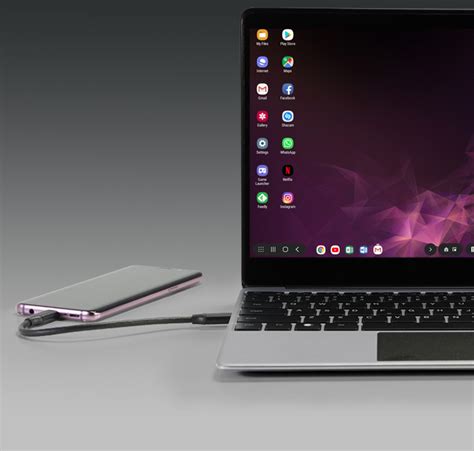The concept of using a smartphone as a laptop has been around for quite some time. Think back to the Motorola Atrix with its Webtop application, a setup that allowed phone owners to dock their devices and gain access to a full desktop experience. This idea resurfaced recently with NexDock, a device designed to transform your smartphone into a full-fledged laptop with an additional keyboard, screen, and trackpad. While this concept has gone through several iterations over the years, NexDock has gained attention for its unique and user-friendly approach.
One of the most exciting features of the NexDock is its compatibility with a variety of smartphones. Whether you have an Android or an iOS device, the NexDock provides a seamless transition from mobile to desktop use, akin to the functionalities offered by Samsung DeX. Users have shared numerous experiences, from using the NexDock with their Steam Deck for gaming to connecting it with Raspberry Pi for remote projects. This adaptability extends the NexDock’s utility far beyond simple day-to-day smartphone use.
However, not all feedback has been glowing. Some users argue that the NexDock website fails to do justice to the product’s capabilities. The homepage is critiqued for not providing sufficient information on compatible phones and the reasons why potential buyers should trust the company. Despite such feedback, loyal users have noted that the device has served them well over the years, showcasing its durability and reliability.
The discussion around the NexDock also delves into the quality of its individual components. For instance, comments on the keyboard’s quality have ranged from ‘reasonable’ for a membrane keyboard to outright skepticism about its feel and function. From my own experience with various mobile accessories, it’s apparent that a good keyboard can make or break the usability of such a device. Thus, if NexDock aims to achieve widespread adoption, refining this aspect could significantly enhance user satisfaction.
Interestingly, some users have implemented creative solutions to extend the NexDock’s capabilities. Using overlays on the Steam Deck, for instance, allows easy changes without risking the device’s core functionality. Here’s an insightful custom code snippet shared by a user for setting up a partition on an SD card and pointing an overlay at it:
mount -t overlay -o "lowerdir=/usr,upperdir=/run/media/OVERLAY/overlay/usr,workdir=/run/media/OVERLAY/workdir/usr" none /usrWhile innovative, such tweaks can be daunting for the average user. Therefore, it’s essential for NexDock to simplify these implementation processes within its ecosystem.
The trend of using a single device for various purposes brings up nostalgic memories of the old ‘one PC for everything’ philosophy. Yet, multiple devices still hold a strong foothold in many households for different activities like gaming, work, and casual browsing. This versatility, along with the hesitance of integrating multiple functionalities into one device due to potential technical mishaps, reflects diverging user preferences.
Moreover, the potential for future product improvements and market adaptation is incredibly significant. For one, the possibility of integrating better connection standards and more efficient battery management solutions could entice more users. Additionally, should Apple ever decide to move in a similar direction, this innovation could see a huge surge in consumer interest, given Apple’s prowess in seamless user experiences.
Finally, it’s critical to address the overarching issue of price. While devices like NexDock add significant value by merging functionalities, they often overlap in price with entry-level laptops, making it a tough sell for budget-conscious consumers. When considering the market for such convergence devices, striking a balance between cost, functionality, and user-friendliness will be paramount to NexDock’s success.
In conclusion, while NexDock stands out for its innovative approach and the variety of use cases it supports, ensuring better marketing, improving product quality, and addressing pricing concerns will help it realize its potential fully. With advancements in mobile processing power and user demands for versatile tech on the rise, convergence tools like NexDock could very well become mainstream in the near future.


Leave a Reply